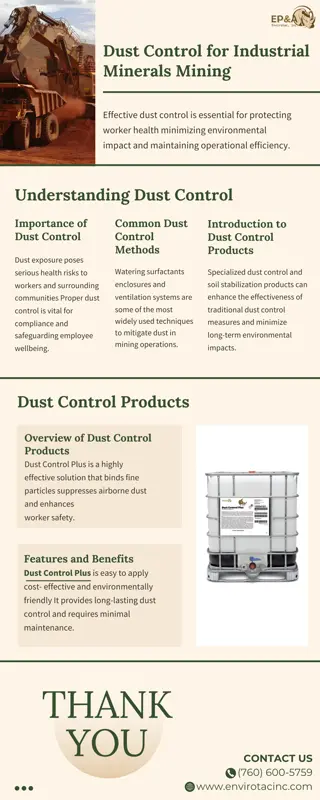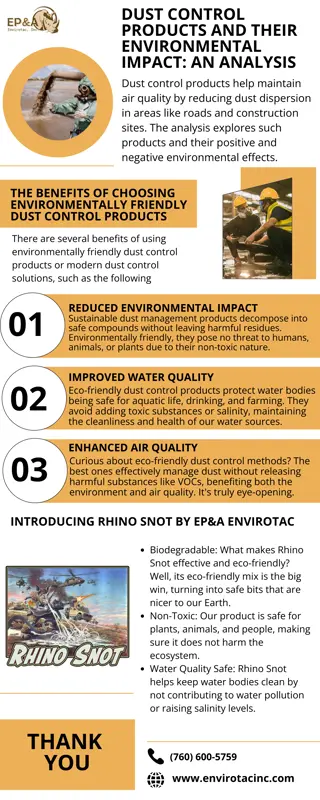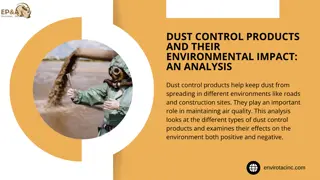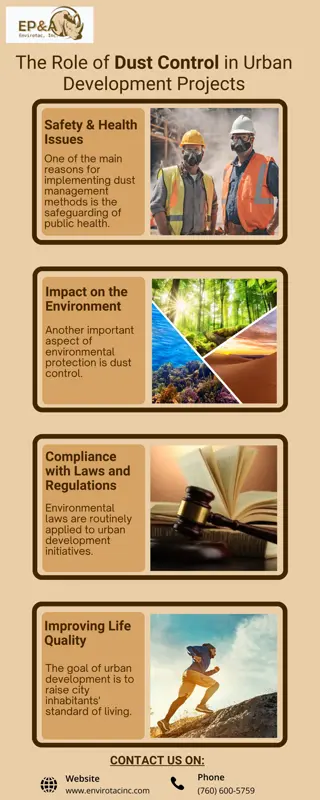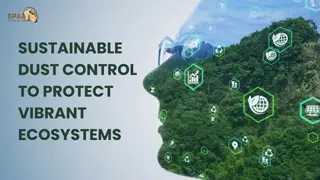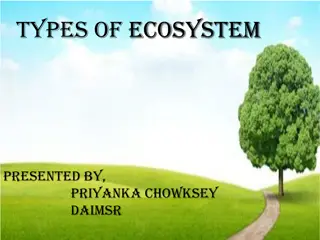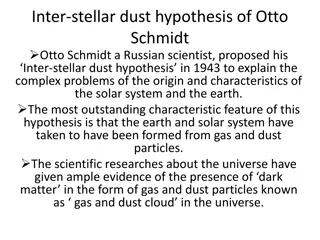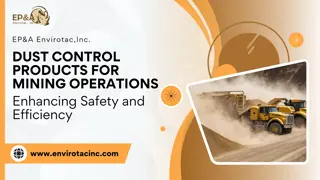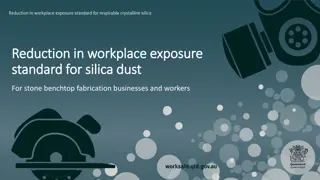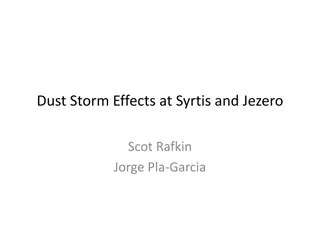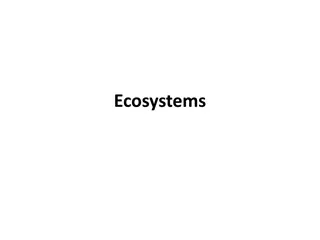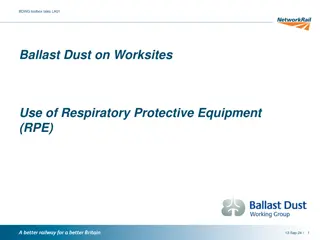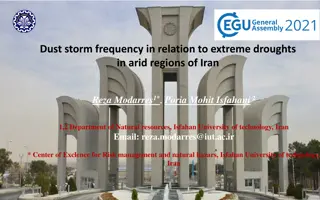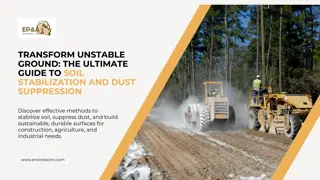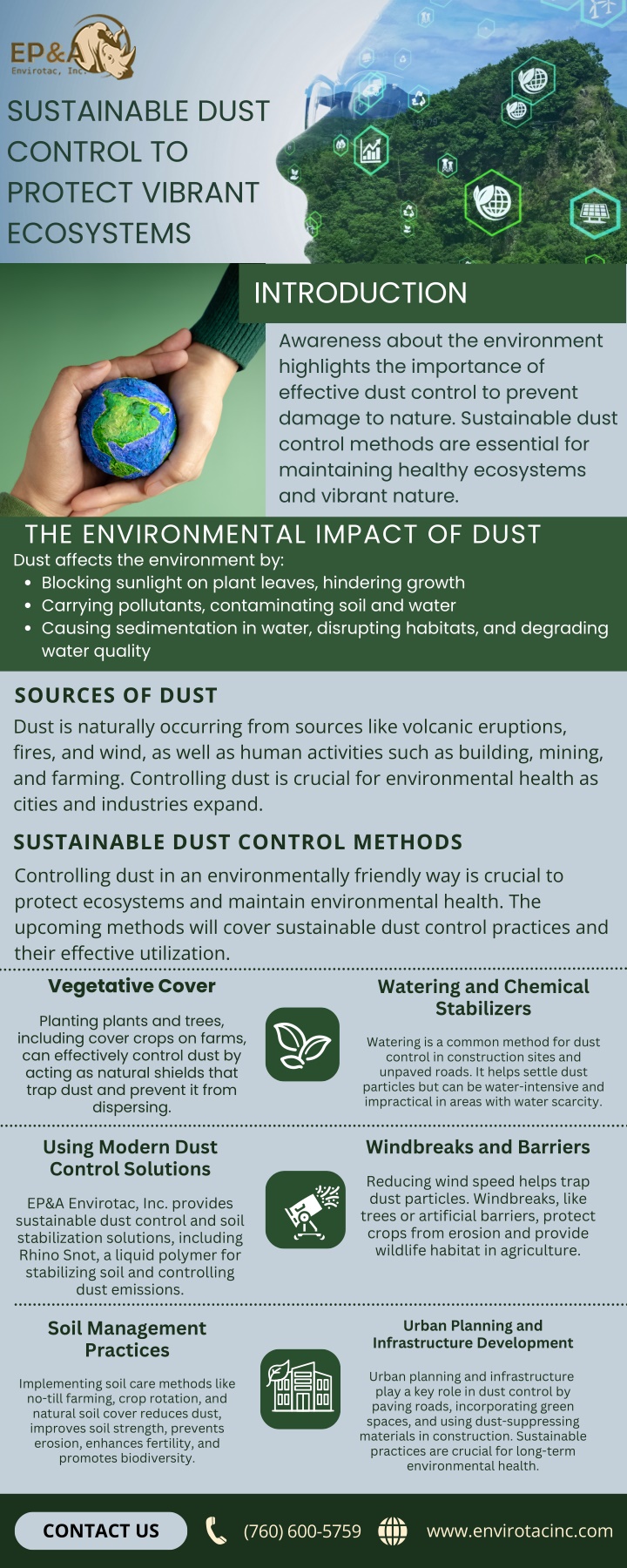
Sustainable Dust Control to Protect Vibrant Ecosystems
With the growing awareness about the environment, dust control naturally assumes a viable position. Dust may appear as a small problem, but at times, it does have the potential to cause enormous damage to nature. Effective dust control is important for keeping ecosystems healthy. This article explores the significance of sustainable dust control and examines methods to ensure that nature remains healthy and vibrant.nn
Download Presentation

Please find below an Image/Link to download the presentation.
The content on the website is provided AS IS for your information and personal use only. It may not be sold, licensed, or shared on other websites without obtaining consent from the author. If you encounter any issues during the download, it is possible that the publisher has removed the file from their server.
You are allowed to download the files provided on this website for personal or commercial use, subject to the condition that they are used lawfully. All files are the property of their respective owners.
The content on the website is provided AS IS for your information and personal use only. It may not be sold, licensed, or shared on other websites without obtaining consent from the author.
E N D
Presentation Transcript
SUSTAINABLE DUST CONTROL TO PROTECT VIBRANT ECOSYSTEMS INTRODUCTION Awareness about the environment highlights the importance of effective dust control to prevent damage to nature. Sustainable dust control methods are essential for maintaining healthy ecosystems and vibrant nature. THE ENVIRONMENTAL IMPACT OF DUST Dust affects the environment by: Blocking sunlight on plant leaves, hindering growth Carrying pollutants, contaminating soil and water Causing sedimentation in water, disrupting habitats, and degrading water quality SOURCES OF DUST Dust is naturally occurring from sources like volcanic eruptions, fires, and wind, as well as human activities such as building, mining, and farming. Controlling dust is crucial for environmental health as cities and industries expand. SUSTAINABLE DUST CONTROL METHODS Controlling dust in an environmentally friendly way is crucial to protect ecosystems and maintain environmental health. The upcoming methods will cover sustainable dust control practices and their effective utilization. Vegetative Cover Watering and Chemical Stabilizers Planting plants and trees, including cover crops on farms, can effectively control dust by acting as natural shields that trap dust and prevent it from dispersing. Watering is a common method for dust control in construction sites and unpaved roads. It helps settle dust particles but can be water-intensive and impractical in areas with water scarcity. Using Modern Dust Control Solutions Windbreaks and Barriers Reducing wind speed helps trap dust particles. Windbreaks, like trees or artificial barriers, protect crops from erosion and provide wildlife habitat in agriculture. EP&A Envirotac, Inc. provides sustainable dust control and soil stabilization solutions, including Rhino Snot, a liquid polymer for stabilizing soil and controlling dust emissions. Soil Management Practices Urban Planning and Infrastructure Development Urban planning and infrastructure play a key role in dust control by paving roads, incorporating green spaces, and using dust-suppressing materials in construction. Sustainable practices are crucial for long-term environmental health. Implementing soil care methods like no-till farming, crop rotation, and natural soil cover reduces dust, improves soil strength, prevents erosion, enhances fertility, and promotes biodiversity. CONTACT US www.envirotacinc.com (760) 600-5759




